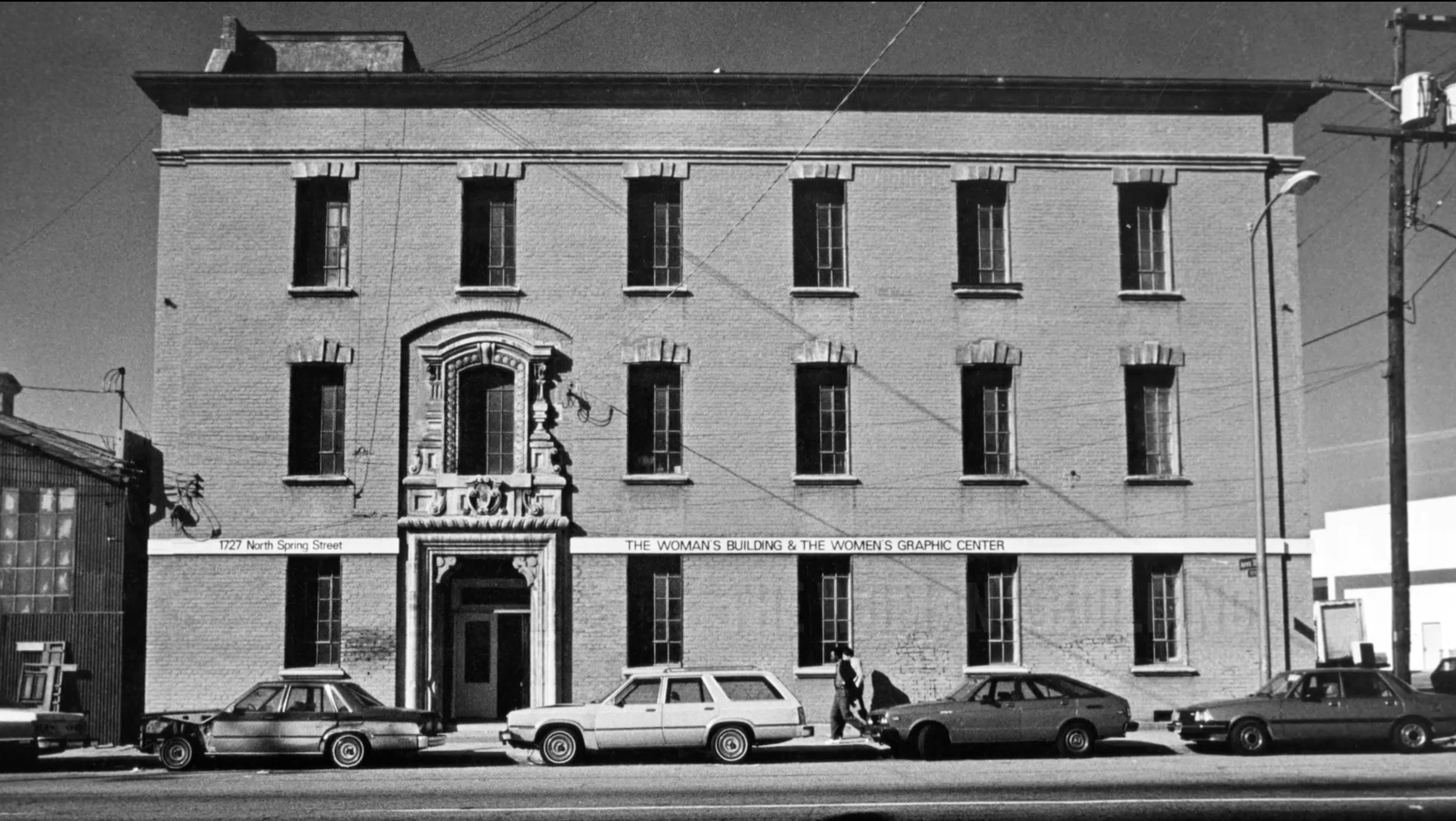The Woman's Building

Credit: Chris Gulker, Herald-Examiner Collection/Los Angeles Public Library, 1983
Founded as an act of protest, The Woman's Building is a cornerstone in late-twentieth-century lesbian and feminist culture.
From 1973 to 1991, the Los Angeles-based organization and facility stood as a counterpoint to most major American museums, galleries, and arts programs, which routinely excluded female artists from their circles. Created by and for women, The Woman’s Building exemplified the impulse among feminists, including lesbians and bisexual women, to establish autonomous spaces outside of traditional, patriarchal institutions.
Three trailblazing women – artist Judy Chicago, art historian Arlene Raven, and graphic designer Sheila Levrant de Bretteville – came together in 1973 to create the first independent art school for women called the Feminist Studio Workshop (FSW). The founding of the FSW represented a crucial milestone for feminist activism within the art world, which targeted mainstream institutions for their broad dismissal of female artists.
The FSW was originally headquartered at 743 S. Grand View Street, near MacArthur Park. The founders and students began to describe the educational center as The Woman’s Building, a tribute to the Sophia Hayden-designed structure at the 1893 World’s Columbian Exposition in Chicago, which exhibited work by female artists from around the globe.
In 1975, the organization relocated to the 1914 Beaux Arts building at 1727 N. Spring Street, where it remained until its closure in 1991. Like its predecessor, the nonprofit center was known as The Woman’s Building in reference to the creative achievements and autonomy of female artists.
Throughout its eighteen-year run, The Woman's Building cultivated an experimental space for women from around the world to explore ideas in feminist theory and sexuality through art. Artists whose work may have been marginalized in other venues found a platform for expressing political goals and viewpoints. Provided safe space for women artists and writers, including Terry Wolverton and Cheri Gaulke.
READ MORE

Chris Gulker, Herald-Examiner Collection/Los Angeles Public Library, 1983
